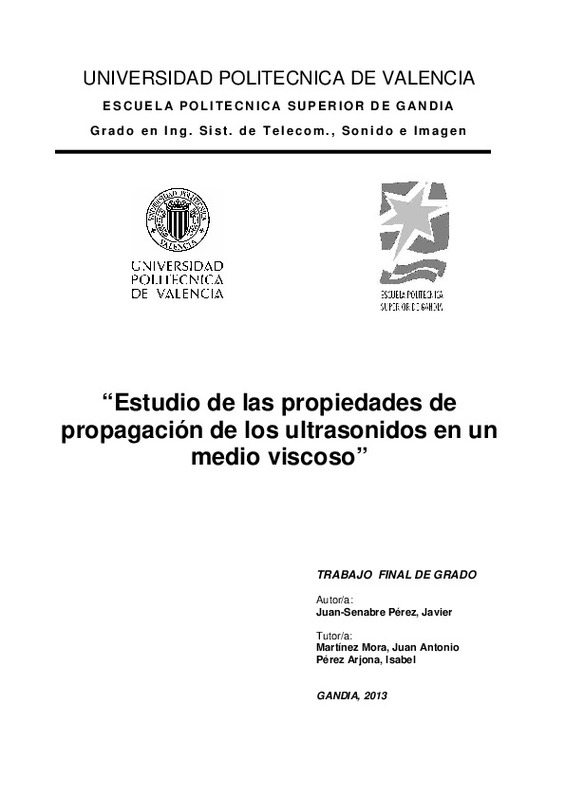JavaScript is disabled for your browser. Some features of this site may not work without it.
Buscar en RiuNet
Listar
Mi cuenta
Estadísticas
Ayuda RiuNet
Admin. UPV
Estudio de las propiedades de propagación de los ultrasonidos en un medio viscoso
Mostrar el registro completo del ítem
Juan-Senabre Pérez, FJ. (2013). Estudio de las propiedades de propagación de los ultrasonidos en un medio viscoso. Universitat Politècnica de València. http://hdl.handle.net/10251/34405
Por favor, use este identificador para citar o enlazar este ítem: http://hdl.handle.net/10251/34405
Ficheros en el ítem
Metadatos del ítem
| Título: | Estudio de las propiedades de propagación de los ultrasonidos en un medio viscoso | |||
| Autor: | Juan-Senabre Pérez, Francisco Javier | |||
| Director(es): | ||||
| Entidad UPV: |
|
|||
| Fecha acto/lectura: |
|
|||
| Resumen: |
El presente ejercicio tiene como finalidad el estudio del comportamiento de medios
con diferente viscosidad al paso de los ultrasonidos por medio de la técnica ecoimpulso.
En concreto se estudia el comportamiento de ...[+]
This exercise aims to study the behaviour of environments with different viscosity
through ultrasounds using the eco-boost technology.
It specifically studies the behaviour of water and glycerol mixtures, with ...[+]
|
|||
| Palabras clave: |
|
|||
| Derechos de uso: | Reserva de todos los derechos | |||
| Editorial: |
|
|||
| Titulación: |
|
|||
| Tipo: |
|
recommendations
Este ítem aparece en la(s) siguiente(s) colección(ones)
-
EPSG - Trabajos académicos [5004]
Escuela Politécnica Superior de Gandia







